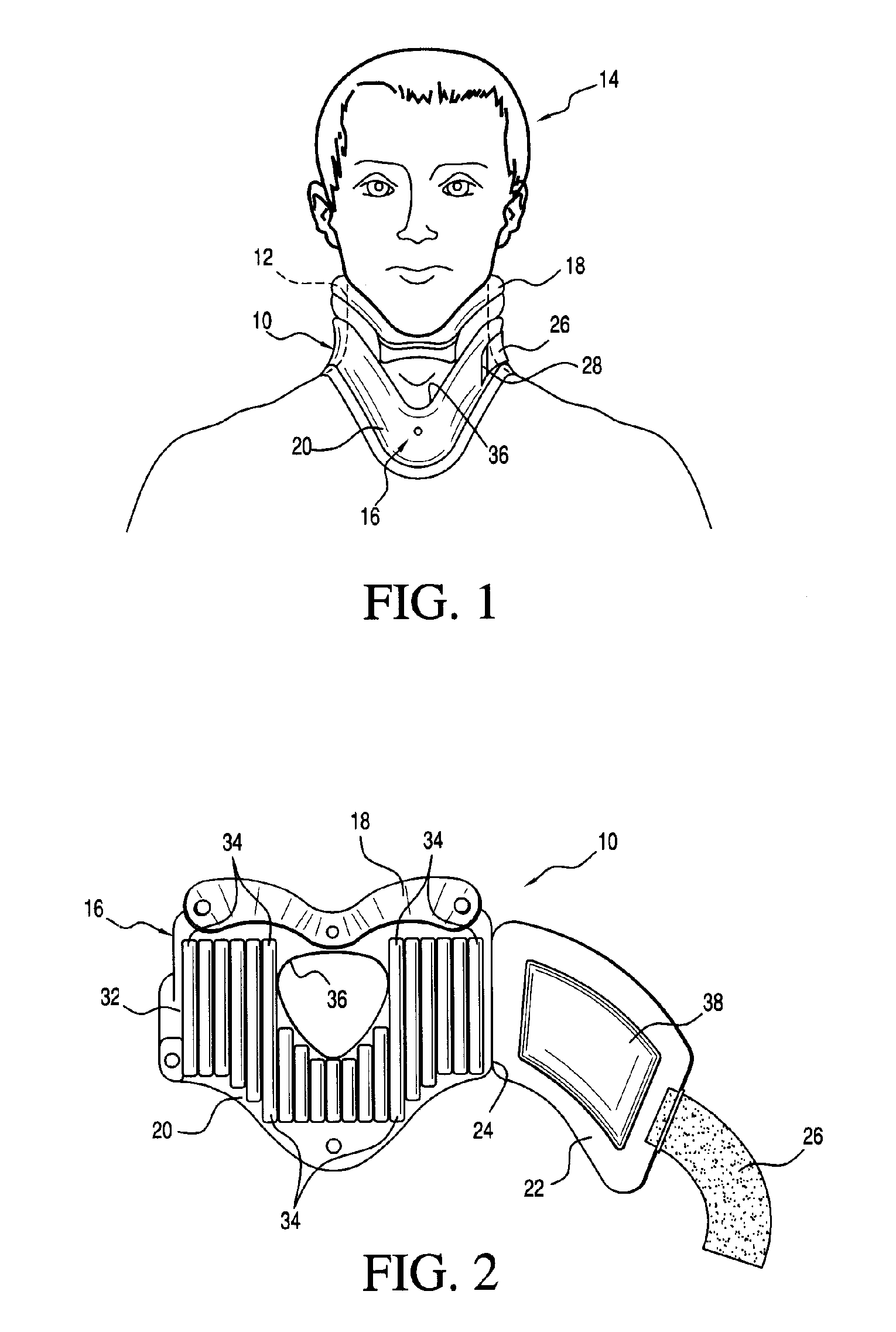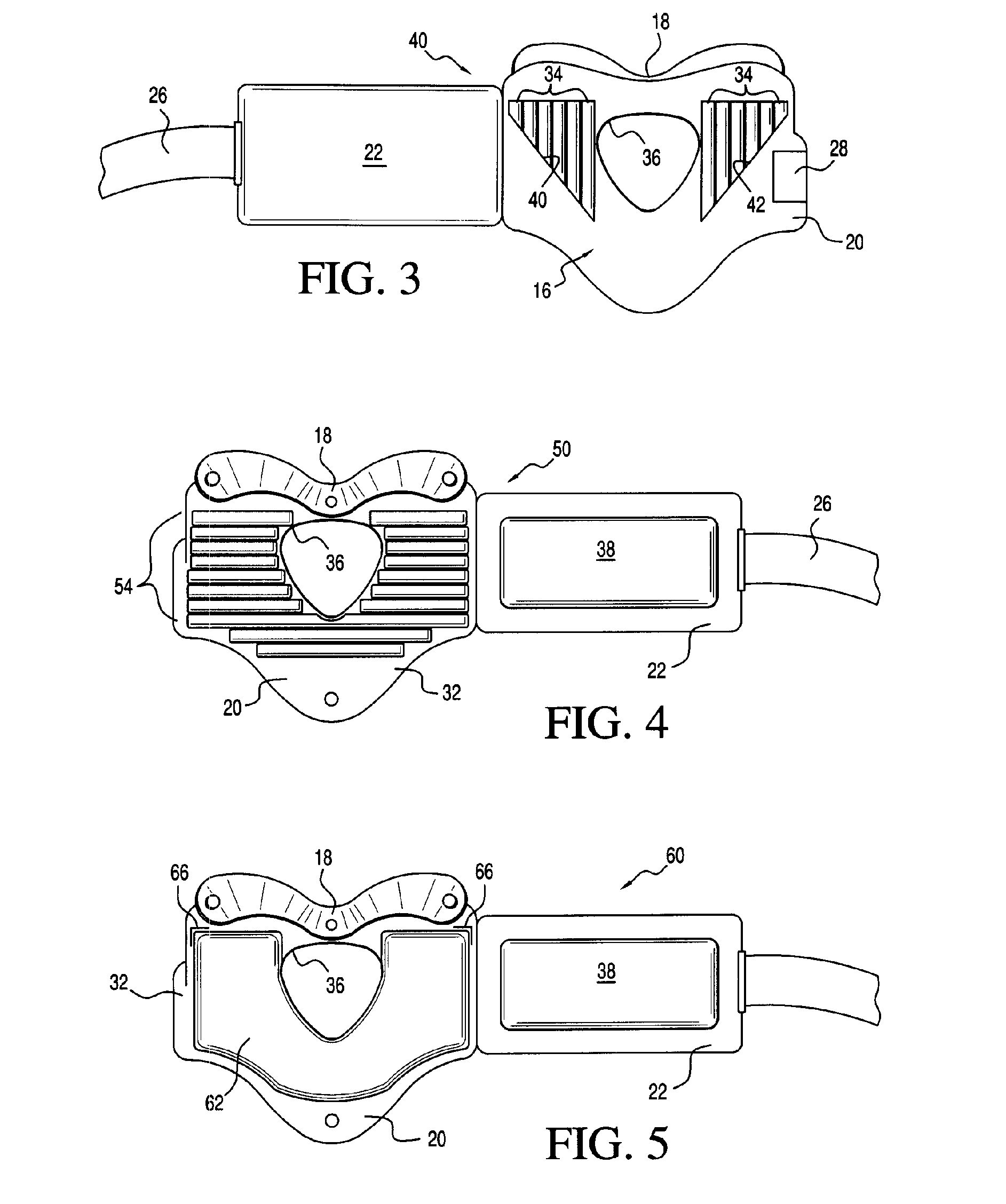Cervical Immobilization Collar with Arterial Cooling Elements
a technology of immobilization collar and cooling element, applied in the field of cervical immobilization and to the therapeutic induction of mild cerebral hypothermia, can solve the problems of brain injury, long-term treatment or care, long-term damage, etc., and achieve the effect of reducing the chance of lasting brain damage and mitigate brain injuries
- Summary
- Abstract
- Description
- Claims
- Application Information
AI Technical Summary
Benefits of technology
Problems solved by technology
Method used
Image
Examples
Embodiment Construction
[0030] A cervical immobilization collar 10 in accordance with the invention is shown in FIG. 1 mounted in place about the neck 12 of a patient or other wearer 14 for purposes of both cervical spine immobilization and transcutaneous cooling of blood flowing through the wearer's carotid arteries. A support structure of the collar 10 includes a main body 16 having an extended axial length that limits cervical compaction of the wearer's neck 12 and a chin rest 18 for limiting cervical rotation of the wearer's neck 12.
[0031] Referring also to FIG. 2, the main body 16 includes an anterior portion 20 and a posterior portion 22. One end of the anterior portion 20 is connected to one end of the posterior portion 22 by an integral joint 24 or other preferably permanent connection. The main body can be formed (preferably by molding) from a variety of materials including plastics, polymers, or carbon or poly-paraphenylene terephthalamide fiber. A hook and loop fastener strap 26 extends from th...
PUM
 Login to View More
Login to View More Abstract
Description
Claims
Application Information
 Login to View More
Login to View More - R&D
- Intellectual Property
- Life Sciences
- Materials
- Tech Scout
- Unparalleled Data Quality
- Higher Quality Content
- 60% Fewer Hallucinations
Browse by: Latest US Patents, China's latest patents, Technical Efficacy Thesaurus, Application Domain, Technology Topic, Popular Technical Reports.
© 2025 PatSnap. All rights reserved.Legal|Privacy policy|Modern Slavery Act Transparency Statement|Sitemap|About US| Contact US: help@patsnap.com



